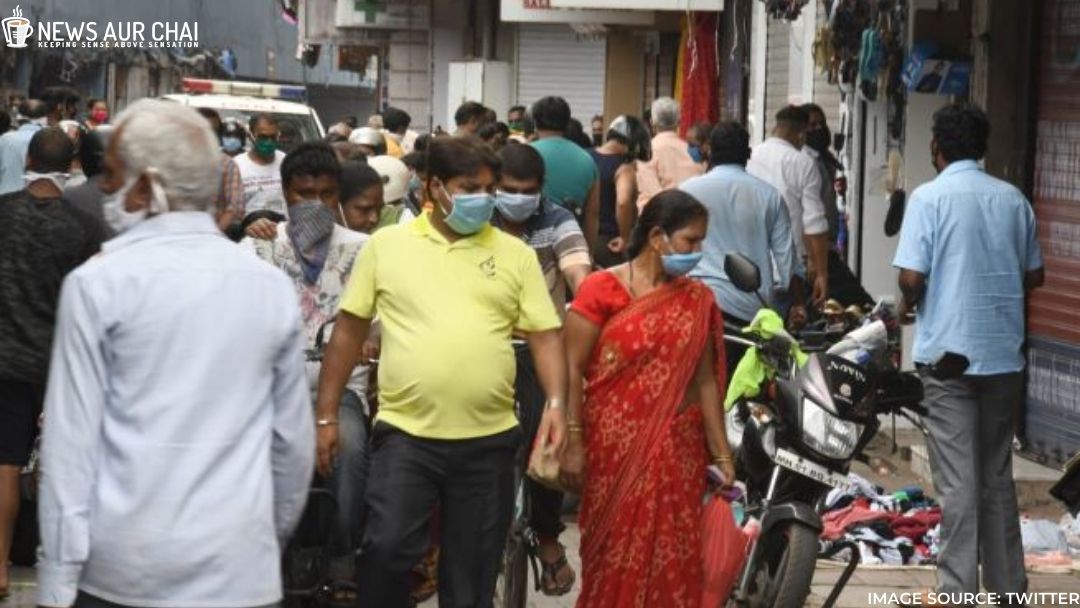4th Worst-hit Nation But No Community Transmission?

On June 11, India surpassed the United Kingdom (UK) to become the 4th country with the highest number of COVID-19 cases in the world. The other three nations include the US, which tops the list, followed by Russia and Brazil. The total number of cases has reportedly crossed the 3.5 lakh mark as of June 18, making India the biggest epicentre of the outbreak in the Asian continent.
Recently, the financial capital of India, Mumbai, crossed the 51,000-mark, overtaking Wuhan in total tally, where the virus first originated. Maharashtra, which saw the highest number of infected cases so far on June 15, now remains the state with the highest number of cases in the country, followed by Tamil Nadu and Delhi.
लॉकडाऊन पुन्हा जाहीर केलेला नाही. मुख्यमंत्री उद्धव बाळासाहेब ठाकरे यांनी जनतेला विनंती व आवाहन केले आहे की कुठेही गर्दी करू नका. शासनाने दिलेल्या सूचनांचे पालन करा आणि स्वतःची काळजी घ्या.
— CMO Maharashtra (@CMOMaharashtra) June 12, 2020
The lockdown has not been reimposed. CM Uddhav Balasaheb Thackeray has appealed to the people to refrain from crowding. He has earnestly requested them to follow the Govt's instructions and take necessary precautions to stay safe and take care.
— CMO Maharashtra (@CMOMaharashtra) June 12, 2020
Maharashtra Chief Minister (CM) Uddhav Thackeray’s tweets on June 12, appealing people to ‘refrain from crowding’ and ‘take necessary precautions to stay safe’ has quelched recent rumours of another lockdown in the state. The social distancing norms which are a part of ‘Mission Begin Again’ which was announced on May 31, continue to be imposed, with shops remaining open between 9 am to 5 pm and all outdoor activities restricted between 5 pm to 7 pm.
While Delhi has announced that over 18,000 samples will be tested every day from June 20, the Tamil Nadu Government recently informed of its decision to implement a state-wide lockdown from June 19 to 30.
The Government claims that the number of recoveries is increasing when compared to the number of positive cases; it does not spell a positive impact. It also continues to reiterate that the country is currently not in the community transmission stage, which also seems to be at odds with the country’s reality.
What is Community Transmission?
According to the World Health Organisation (WHO), COVID-19 is transmitted in four stages, out of which the third stage is community transmission.
The first stage is when the virus first appears in the community mostly due to people who have a travel history from other affected areas. The second stage is the local transmission stage, where the virus spreads to family and friends.
The third stage is the community transmission stage, where the source of the infection is no longer traceable, and it becomes difficult to manage it’s spread, even through extensive lockdowns. The fourth stage is when the disease spreads across geographic borders and becomes an endemic.
Is India facing a COVID-19 Community Transmission?
The Government continues to deny that India reached the community transmission stage, though several scientists and medical professionals seem to believe otherwise.
According to a report published in The New Indian Express (TNIE) on June 2, a spatial analysis of trends conducted by a Tata Institute of Social Sciences (TISS) researcher showed that even before the announcement of the first lockdown (March 24) the community transmission of COVID-19 might have begun in Mumbai. Delay in the detection of these cases caused due to slow in the process of testing, made the situation worse.
The report also states that the Indian Council of Medical Research (ICMR) scientists published lab surveillance data of the surveys conducted to test whether or not community transmission has occurred in 70 odd districts in the country. The published data confirmed that 14 per cent of all confirmed cases until April 30 was due to community transmission. Since then, ICMR has declared that the results are ‘speculative and survey results are yet to be finalised’.
An article by The Week published on June 9, addressed the increasing number of cases in Delhi, wherein the state Health Minister, Satyendar Jain said that ‘the source of infection is not known in half of the fresh cases being reported.’ When asked about community transmission, he replied that the Centre had already spoken about the issue.
This remark was contradicted by Deputy Chief Minister Manish Sisodia who said “Officials from the Centre said at the meeting that there is no community transmission of COVID-19 virus yet in Delhi and hence, there is no need to discuss it,” at a press meet.
Congress had alleged that the 25 per cent positivity cases in Delhi is due to community transmission and Akash Maken, party spokesperson had insisted on ramping up the amount of testing.
Dilip Gosh, the Bharatiya Janata Party (BJP) President in West Bengal had accused the Government led by Mamta Bannerjee of delaying test results and fudging up facts to evade the issue of community transmission that was prevalent in the state.
According to the article, Dr Tejas Patel, renowned cardiologist and Padma Shree awardee had observed on June 7, that Gujarat was already in the community transmission stage of COVID-19.
Getting into 10,000-death mark
It is alarming to note that within eighteen days, India jumped from tenth worst-affected nation to the fourth. As of June 18, India had over 3.6 lakh confirmed cases of the virus with nearly 13,000 cases, increasing day by day. As the country has crossed the 10,000 deaths tally, it is becoming harder to believe that there is no community transmission happening.
As reported by India Today, though the number of recoveries surpassed the number of infected cases on June 10, a shocking discovery made it clear the data for the number of recoveries reported is that of ten days back. This means the total number of new cases continues to be higher than recoveries. Though the number of positive cases reported between June 3 and June 13 is approximately over 9000, the recoveries reported between these dates remain 5000.
The recovery rate is also not steadily increasing either- no state in the country has reported a steady increase in the number of recoveries or a steady decrease in the number of infections. The graphs keep fluctuating, with states like Kerala reporting multiple increases in recovery rates while those like Tamil Nadu keep reporting a decrease.
The number of recoveries reported in China declined during the last week of February as well, but what truly made a difference was the decrease in the number of newer cases daily. The rise in recovery rate only indicates a positive impact if there is a steady decrease in the number of new infections as well.
While the Government continues to deny community transmission and claims that the recovery rate is higher than the number of positive cases, the increasing number of deaths and infections seem to hint otherwise. With a vaccine or a definite cure yet to be discovered, community transmission, if it is underway, indicates the need for measures fare more effective than lockdowns or social distancing.






One Comment